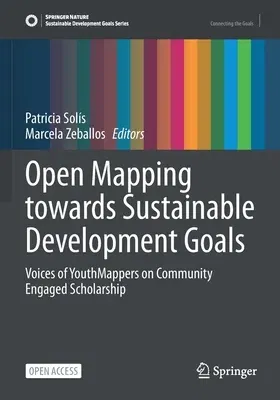This collection amplifies the experiences of some of the world's young
people who are working to address SDGs using geospatial technologies and
multi-national collaboration. Authors from every region of the world who
have emerged as leaders in the YouthMappers movement share their
perspectives and knowledge in an accessible and peer-friendly format.
YouthMappers are university students who create and use open mapping for
development and humanitarian purposes. Their work leverages digital
innovations - both geospatial platforms and communications
technologies - to answer the call for leadership to address
sustainability challenges.
The book conveys a sense of robust knowledge emerging from formal
studies or informal academic experiences - in the first-person voices of
students and recent graduates who are at the forefront of creating a new
map of the world. YouthMappers use OpenStreetMap as the foundational
sharing mechanism for creating data together. Authors impart the way
they are learning about themselves, about each other, about the world.
They are developing technology skills, and simultaneously teaching the
rest of the world about the potential contributions of a highly
connected generation of emerging world leaders for the SDGs. The book is
timely, in that it captures a pivotal moment in the trajectory of the
YouthMappers movement's ability to share emerging expertise, and one
that coincides with a pivotal moment in the geopolitical history of
planet earth whose inhabitants need to hear from them.
Most volumes that cover the topic of sustainability in terms of youth
development are written by non-youth authors. Moreover, most are written
by non-majoritarian, entrenched academic scholars. This book instead
puts forward the diverse voices of students and recent graduates in
countries where YouthMappers works, all over the world. Authors cover
topics that range from water, agriculture, food, to waste, education,
gender, climate action and disasters from their own eyes in working with
data, mapping, and humanitarian action, often working across national
boundaries and across continents. To inspire readers with their
insights, the chapters are mapped to the United Nations 17 Sustainable
Development Goals (SDGs) in ways that connect a youth agenda to a global
agenda.
With a preface written by Carrie Stokes, Chief Geographer and GeoCenter
Director, United States Agency for International Development (USAID).
This is an open access book.

